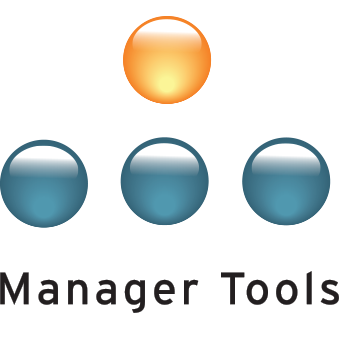 Submitted by mattpalmer on
Submitted by mattpalmer on
in
Forums
I've been practicing my DISC observation/analysis skills since the ECC in Sydney a few days ago, and I've hit a couple of common body language behaviours I can't quite "place" in the top/bottom/left/right ranges. I was hoping someone might have some useful ideas
First, a fairly easy one: hands on hips. Feels to me like an assertive behaviour, a kind of a "big" gesture. Does anyone have any other interpretation? To clarify, this isn't someone putting their hands on their hips and pouting or huffing, it's just a casual "this is where I choose to rest my hands at the moment" movement.
Secondly: folded arms. Again, not in a forceful way, just "this is where I'm resting my arms". I can make an argument to myself that this could sit in any of "top" ("I'm asserting my dominance"), "bottom" ("I'm making some space for myself"), or "left" ("People: not my thing"). The only thing I'm confident it *isn't* is "I'm a people person". Does this just mean that folded arms is just a poor indicator, and I should focus on other behaviours?
Finally, hands in pockets. I lean towards it being a "bottom" behaviour, but I'm a raging high-D and I often put my hands in my pockets, so I'm not as confident about my diagnosis (although I don't often put my hands in my pockets while I'm talking -- I fidget, and love to have something in my hands to manipulate, like a pen).
If it makes a difference, I was observing these behaviours at a kids birthday party (watching the parents interact with each other in casual conversation).



Well, in my case, any of the
Well, in my case, any of the above arm/hand positions could mean "I've had shoulder surgery, and it aches when my unsupported arm hangs down by my side too long".
Its pretty cool this stuff isn't it?!
Hi Matt
My sense is that the hands on hips is a top hemisphere behaviour - because elbows are going outside the "box". To me it says "I'm standing my ground" and that requires assertivenes. I'd actually say it is probably more of a D than an I behaviour for the reasons you gave.
Folded arms to me are a left hemisphere behaviour - the equivalent of "talk to the hand", keep your distance stuff. My sense is that high Ds would do it as a challenge, high Cs would do it as a defensive play.
Hands in pockets is a tough one. I'd categorise it as bottom hemisphere behaviour as it automatically restricts you from ever doing a big gesture. However it could also be a left hemisphere behaviour because, like folded arms, it is a "I'm closed off" type of gesture. My sense is if the person is doing it with eye contact, they're D. If they're avoiding eye contact probably a C.
I wouldn't stress too much about it - remember you're looking for a large quantity of behaviours, so even if you get a few that fall outside of what you expect from a certain profile, you can write those off as outliers if you have enough data pointing elsewhere.
I too have been practicing the Communications stuff since last week. I did the adapting a few times on Friday and had great success with it - I had one High D who was in the worst mood I've ever seen him in (communications wise, in extra short, closed off and telling mode) and I managed to turn him around to the point where he was actually asking my advice on how to solve his problem. (Hey Mark & Dani - you'll never believe it, this stuff works!)
Good to meet and speak with you at the conference as well Matt, happy practicing!
Mark Mc
I realise that last post is not High D style BTW
Sorry about the length of that answer High D Matt. To paraphrase Pascal "I make this post long because I lack the time to make it short."
That Pascal Quote...
... has been in my head ever since the conference. I almost used it in an e-mail last night, but piked out.
Don't worry about high-Ding your messages to me... I actually thought, based on the "DISC e-mail" casts I listened to a little while ago that I *had* to be a high-C, because my e-mails are *always* ridiculously over-long and chock full of detail (and attachments). It was something of a surprise to find that I wasn't high-C at all (although higher-C than S and I -- not that *that* was a surprise). So yeah, while I found the "analysing e-mail" part of the conference interesting and everything, anyone who tries to read me via e-mail is in for a shock. But I like getting high-C style e-mails, as well, so I guess tailoring e-mails to me based on my "e-mail DISC profile" would work fine. It might not work so well trying to analyse me via e-mail and then trying to use that in conversation, though. It's a timely reminder that you can't ever pigeonhole someone -- don't think you *know* someone, and so the hard work is over. Always watch how the other person is reacting, and adjust over and over again.
Oh look, another high-C written communication. Where's the "attach" button here, again? I have a spreadsheet here...
Read a book on this recently...
I read a book recently called "What Every Body is Saying" by Joe Navarro, an ex-FBI agent. It was a bit of a "smokey" choice for me and it turned out to be quite interesting. In it he covers all sorts of body gestures, including those mentioned in the post.
Hands on hips (with thumbs pointing towards the back) he says is a powerful territorial stance used to establish dominance or to communicate that "there are issues". Sounds High D to me. He also notes a hands on hips pose that has the thumbs pointing to the front with fingers pointing down can mean a more inquisitive less authoritarian position.
He says that many of us cross our arms in public in a comfortable relaxed pose when we are waiting or listening to a speaker; at say a party? Not necessarily indicative of assertive or reserved perhaps. Other arm crossing situations to watch out for are when someone suddenly crosses their arms during a conversation or hands are tightly gripping arms, both of which can indicate discomfort. For me this would be a defensive, go smaller stance that indicates reserved - bottom half.
Hands in pockets is an interesting one. I would have thought reserved, bottom half. But the author says that thumbs sticking out of pockets can be a high confidence display. Thumbs in pockets though indicates low confidence.
The book is interesting in the knowledge he imparts but also for the stories he tells about how he used his body gesture reading skills to nail crooks.
Ooooh, books!
Thanks for the pointer, jhowse, sounds like an interesting book on body language, spiced up by some true crime stories. Now the only remaining trick is finding time to read it...